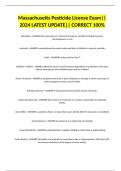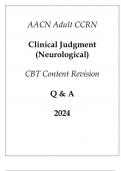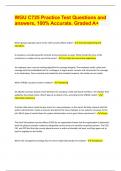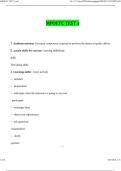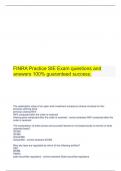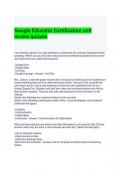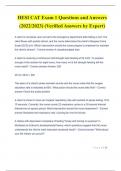Exam (elaborations)
Massachusetts Pesticide License Exam|| 2024 LATEST UPDATE|| CORRECT 100%
- Course
- Institution
absorption - ANSWER the movement of a chemical into plants, animals (including humans), microorganisms or soil Acaricide - ANSWER a pesticide used to control mites and ticks. a Miticide is a type of acaricide Acidic - ANSWER having a ph less than 7 Acidifiers = Buffers - ANSWER adjuvants u...
[Show more]
